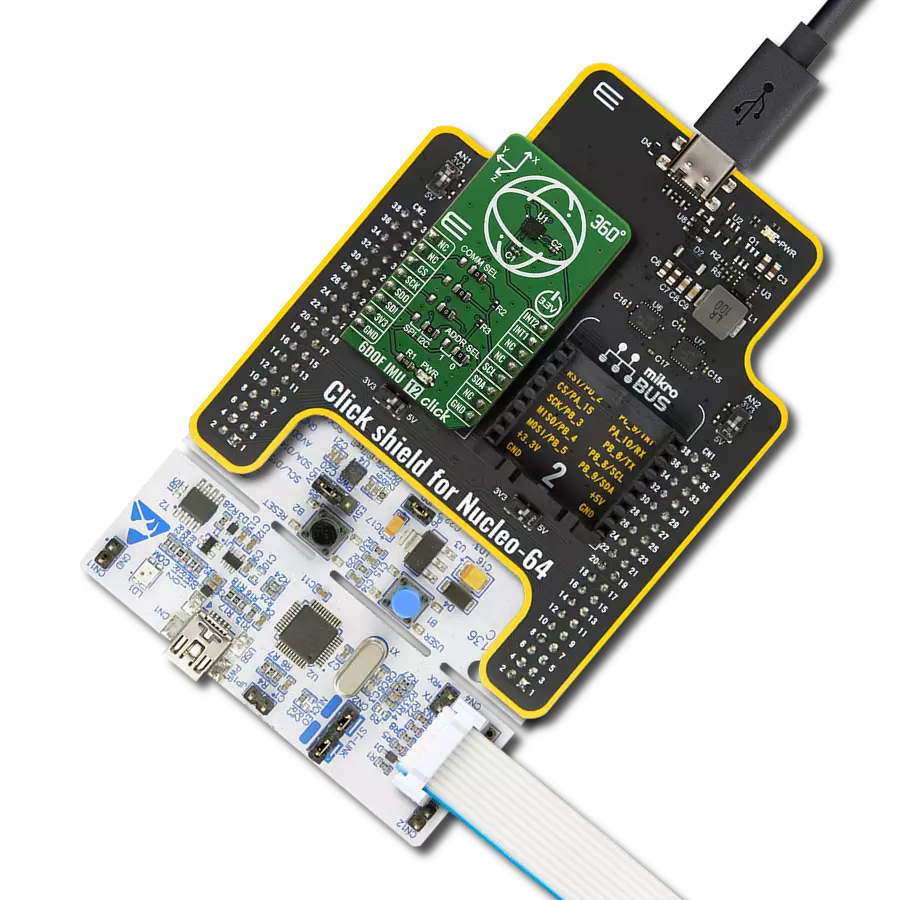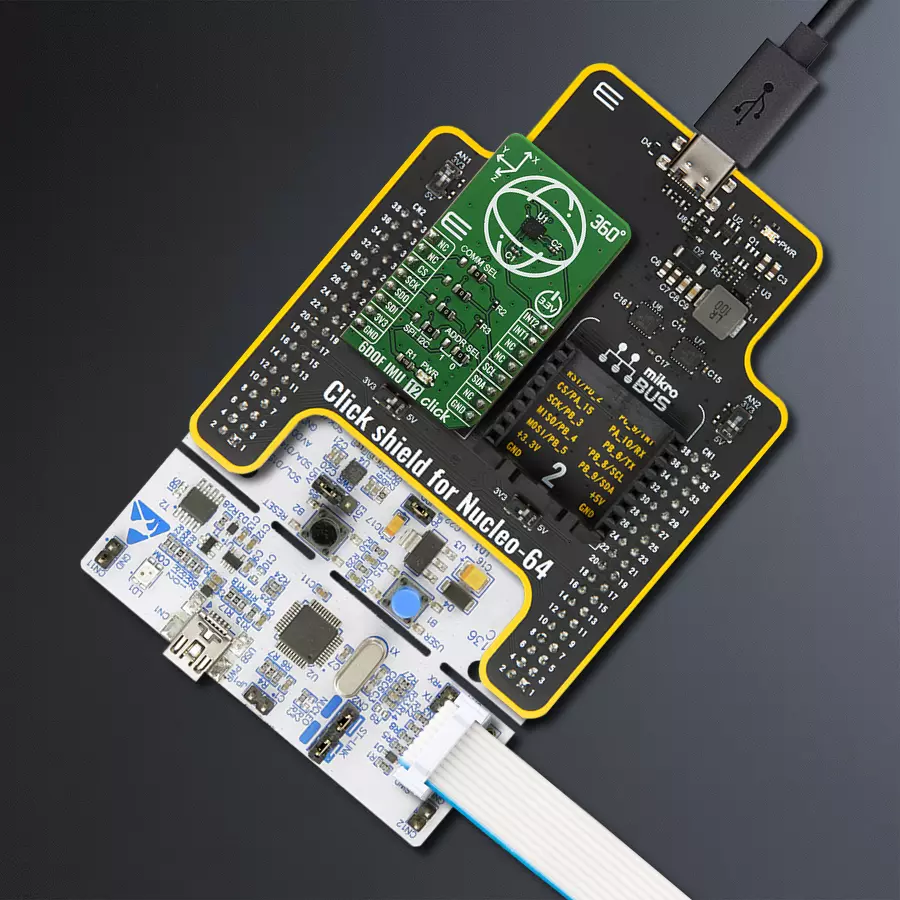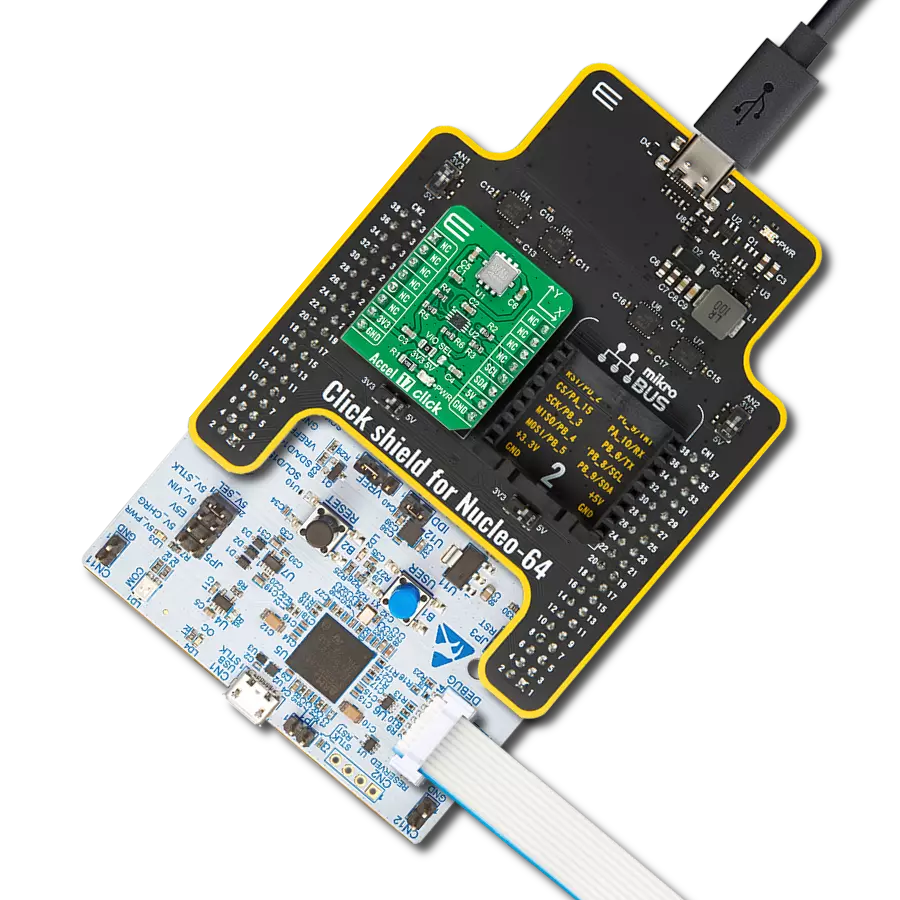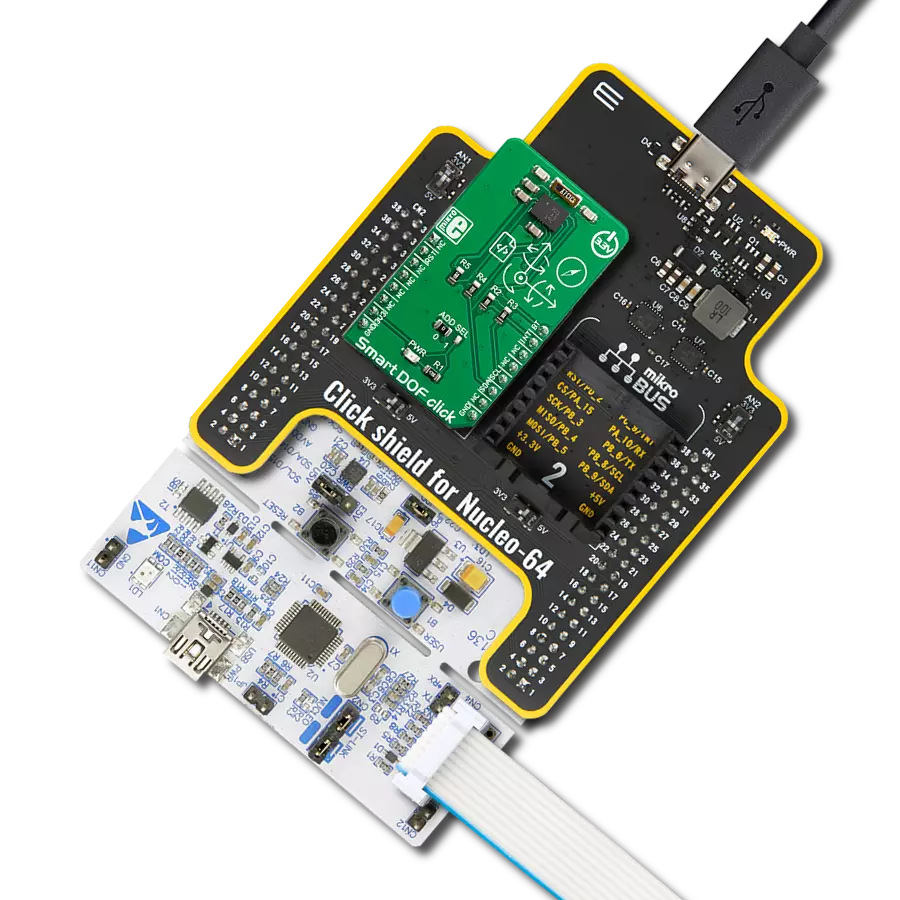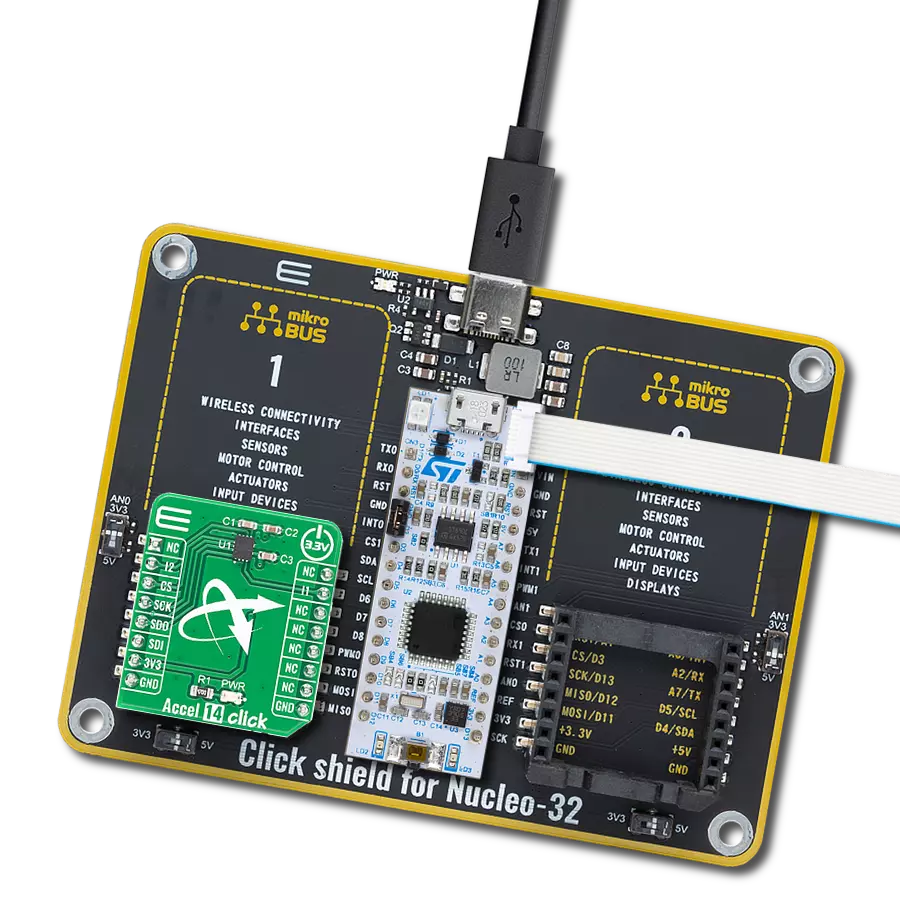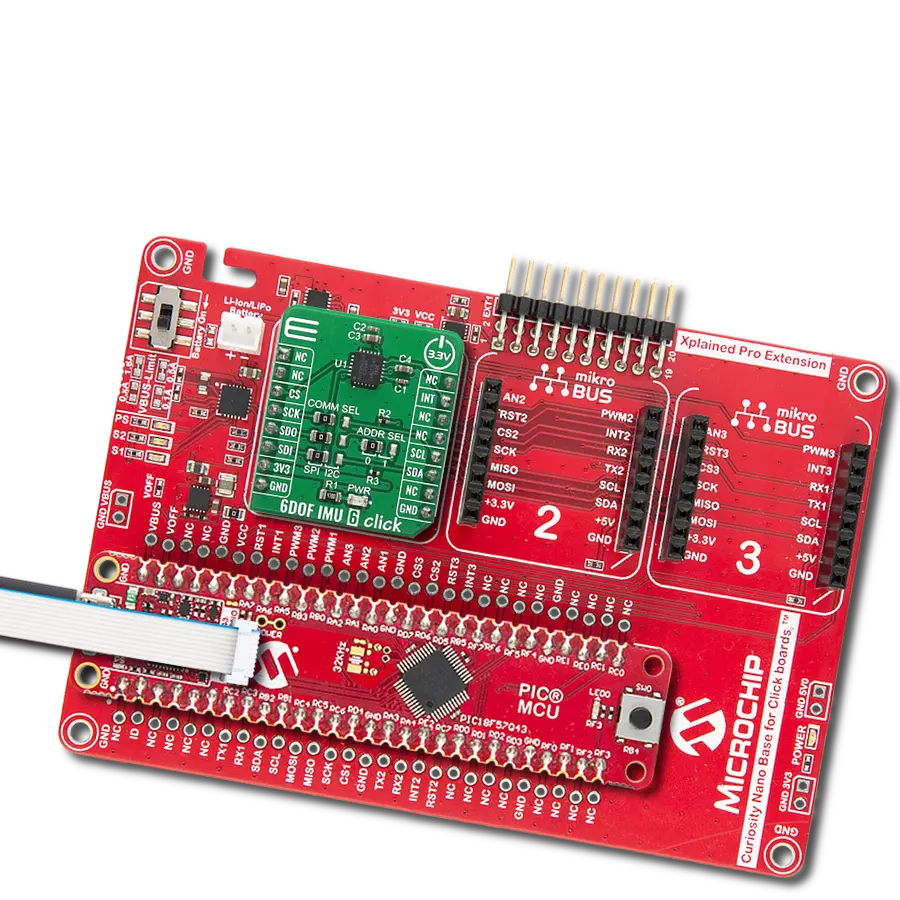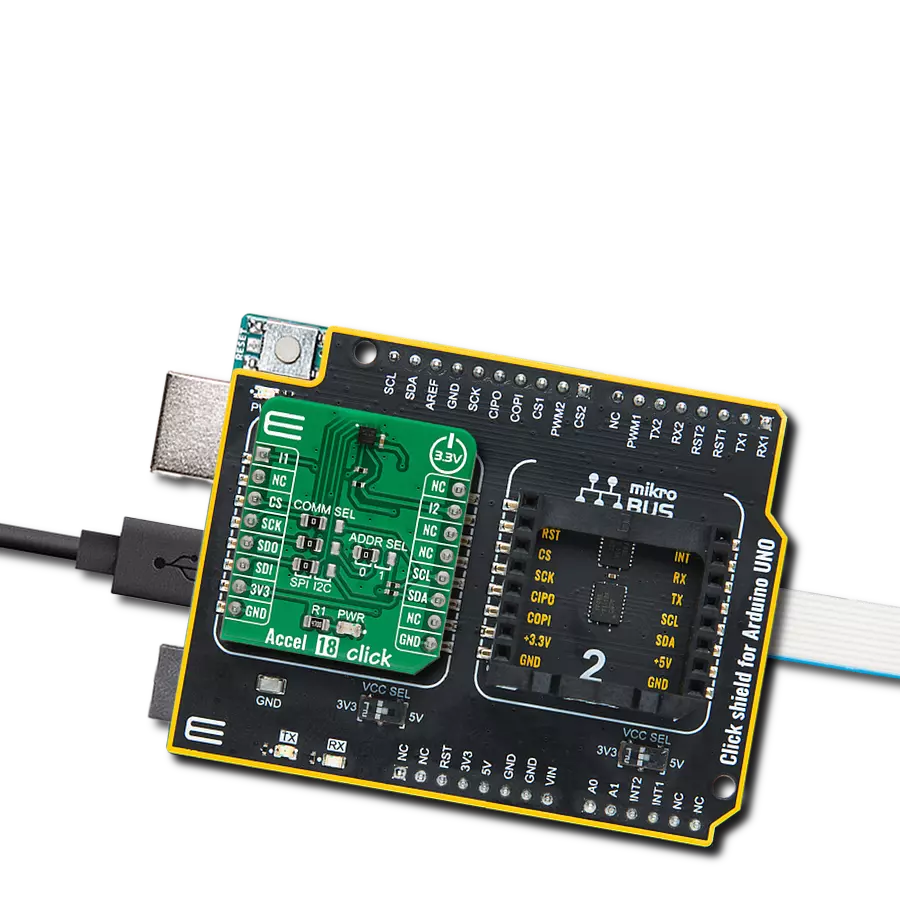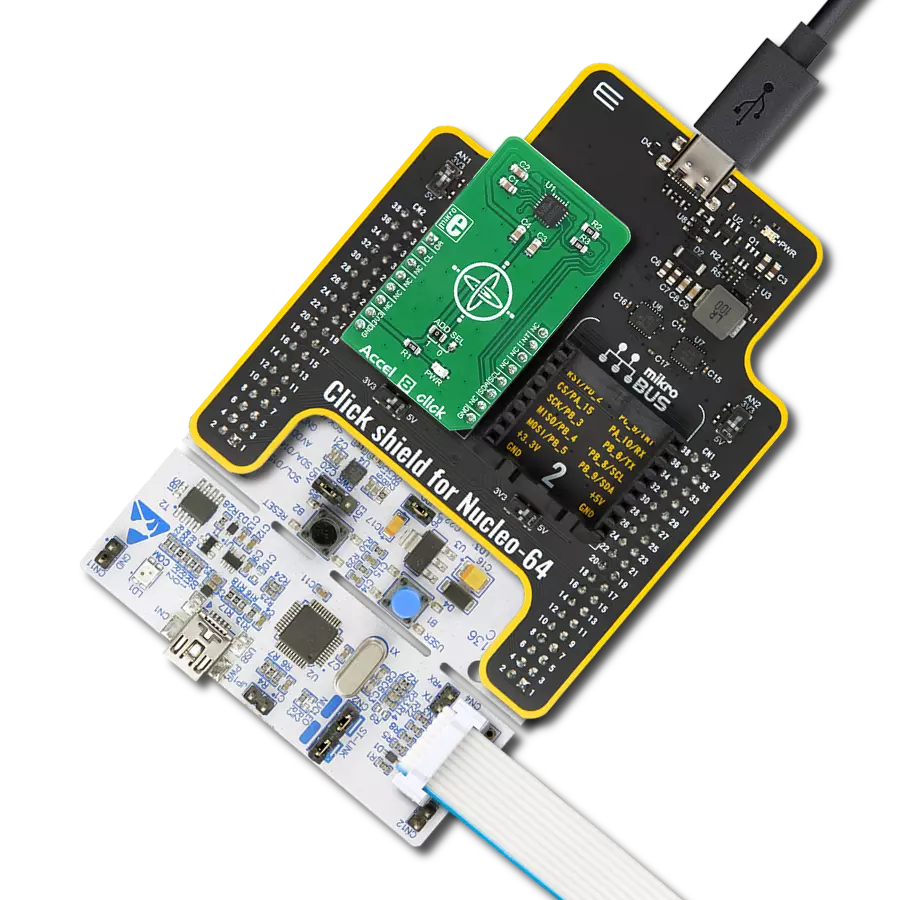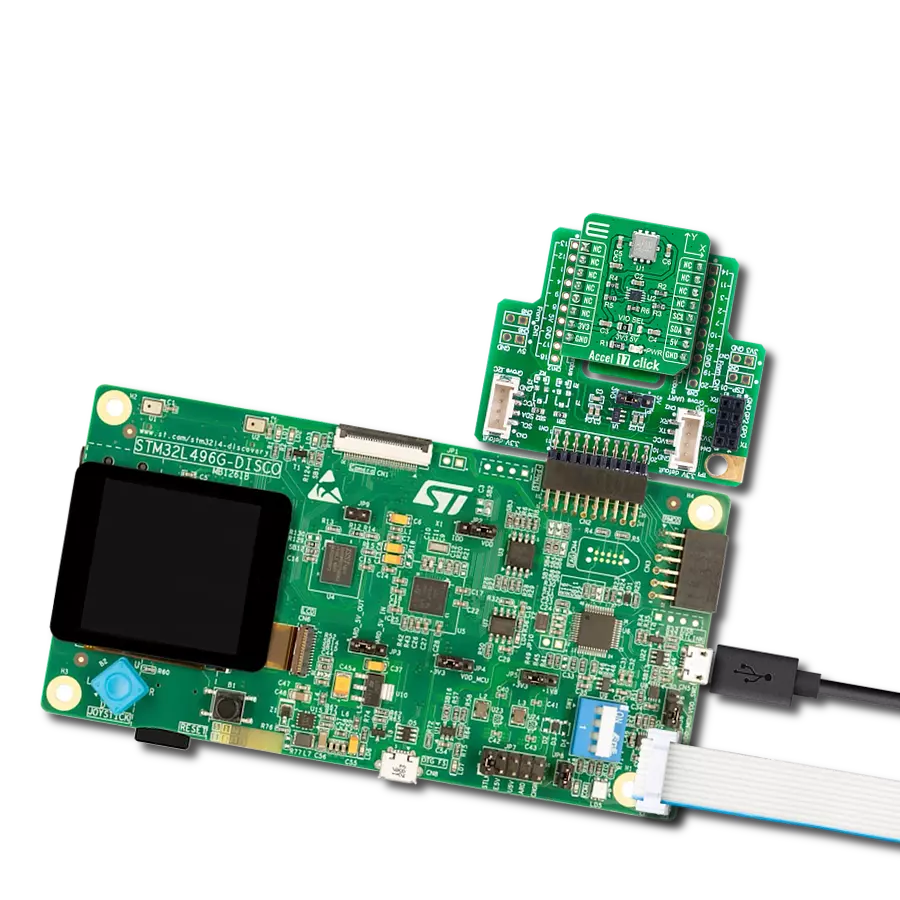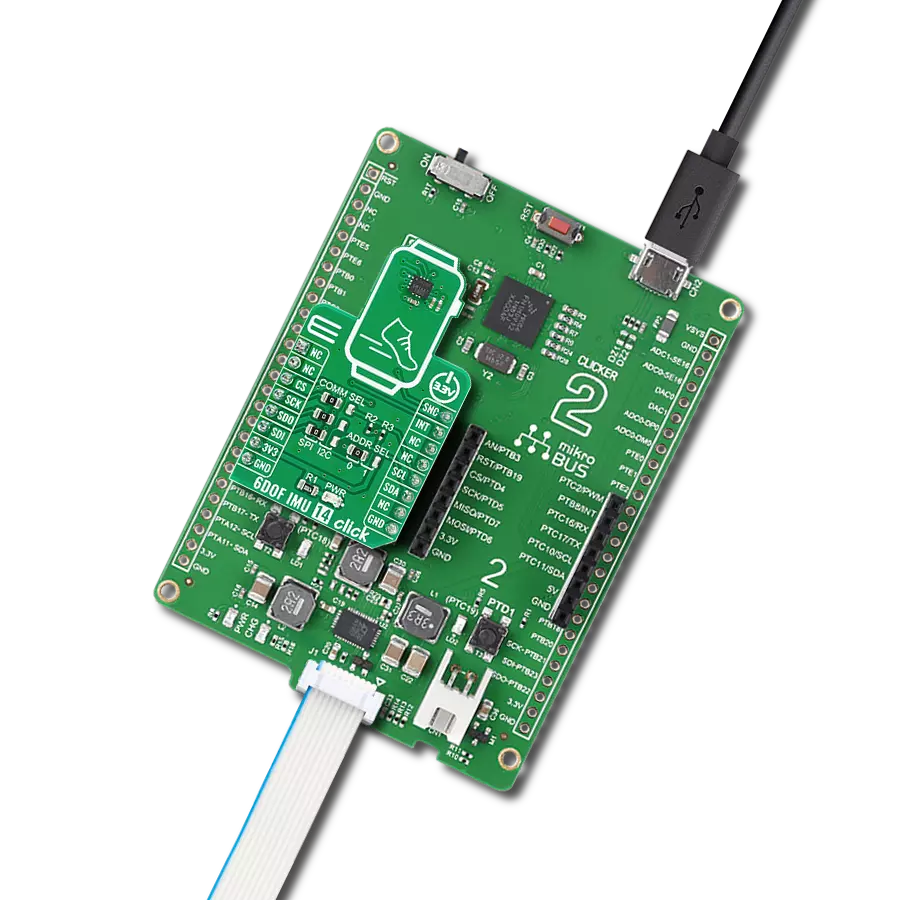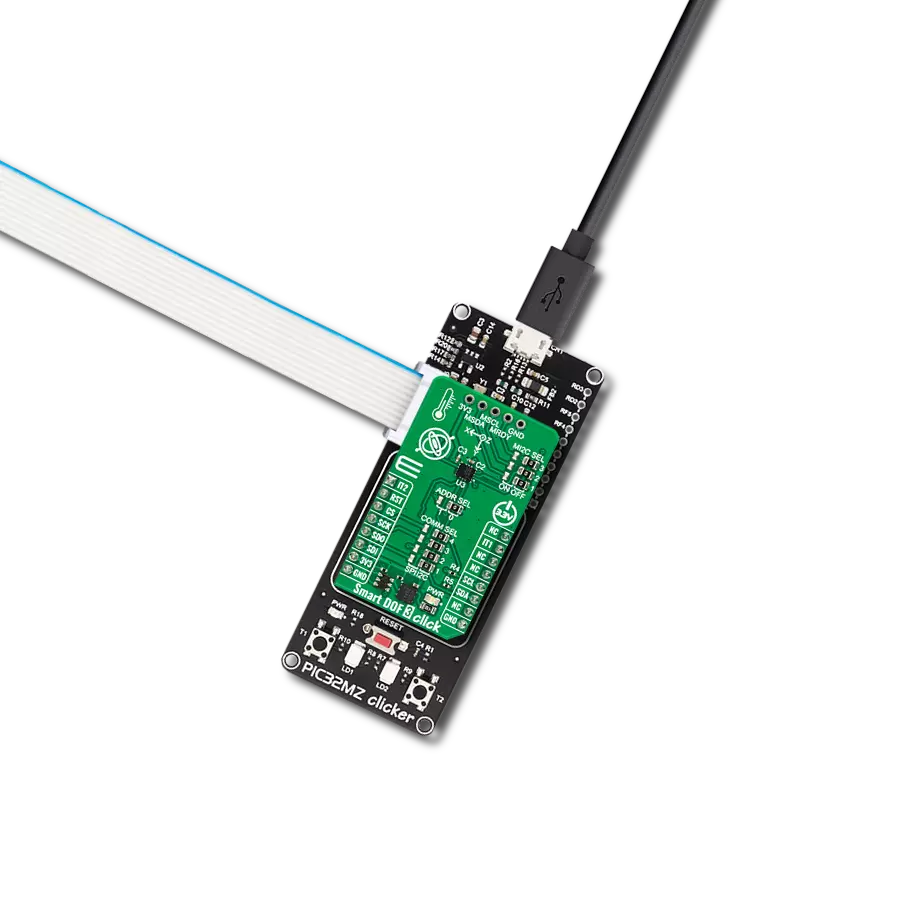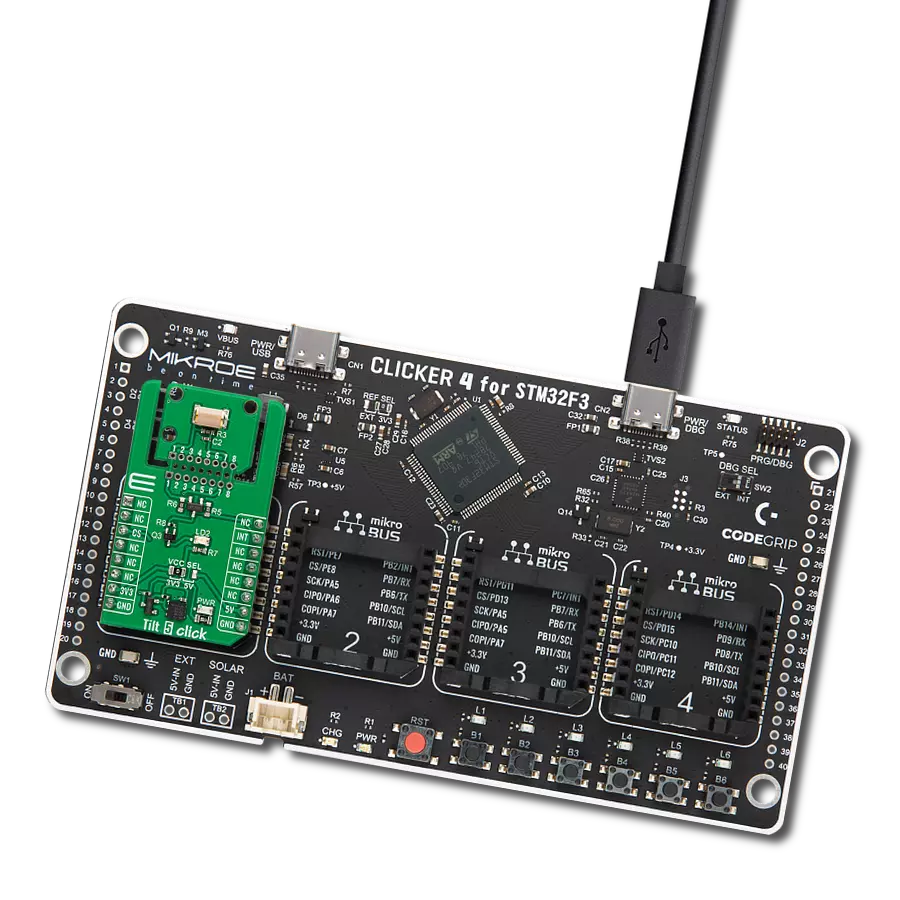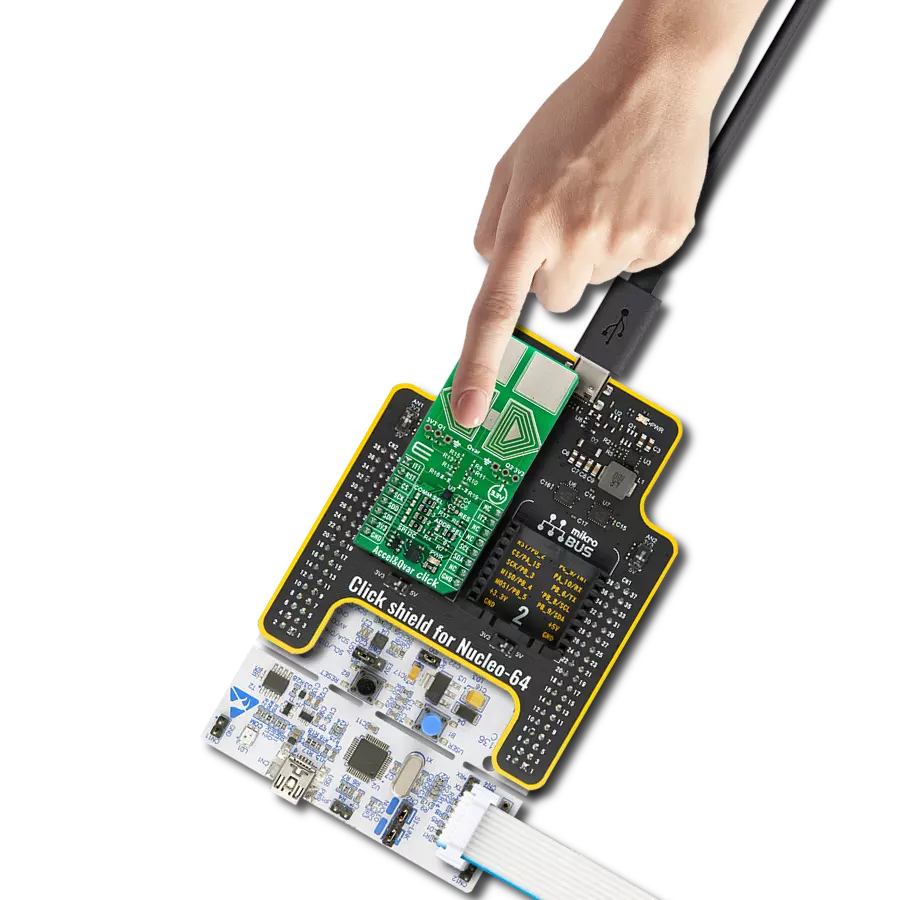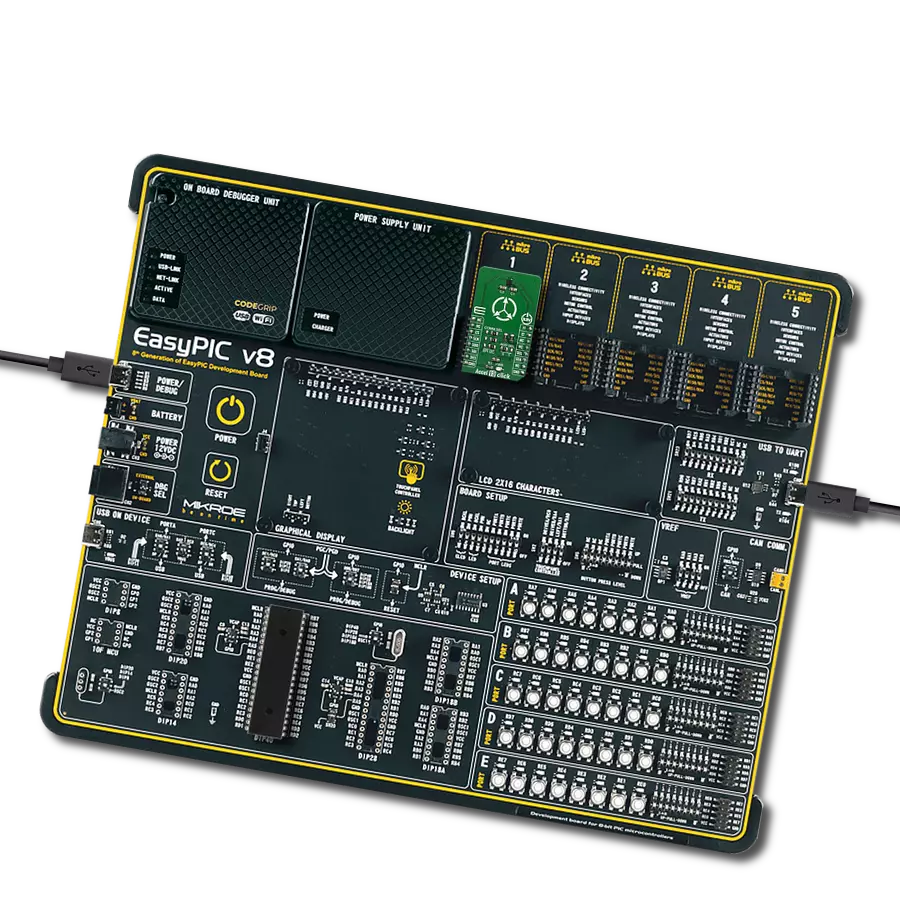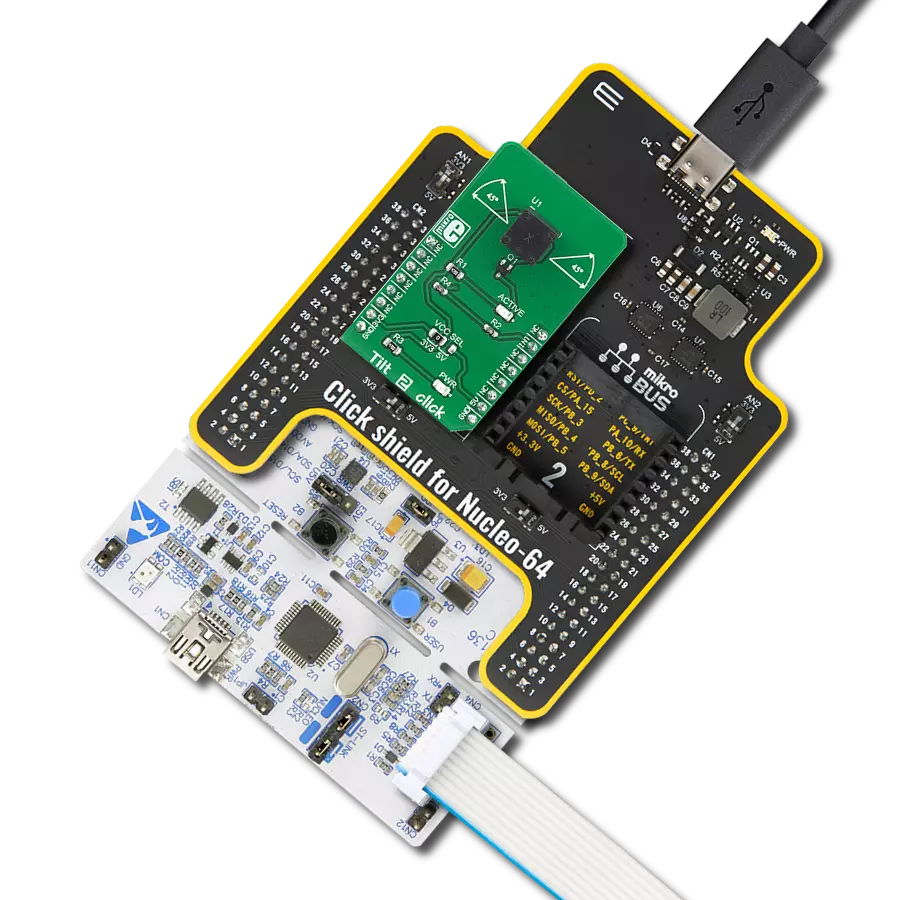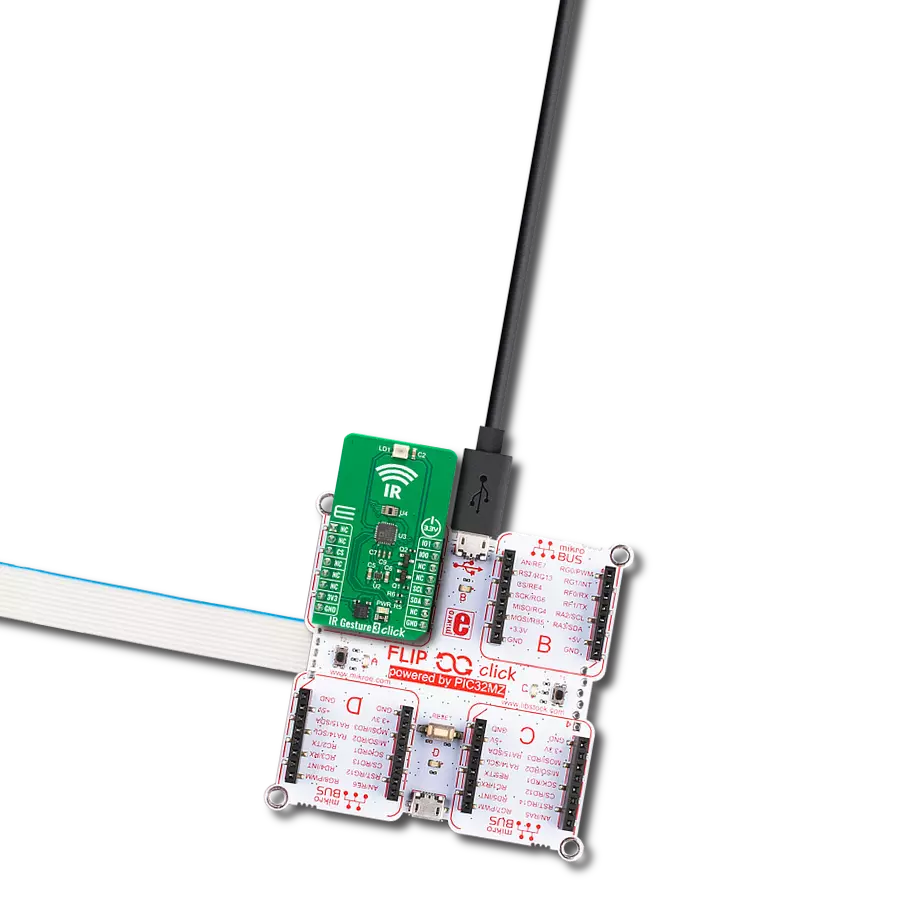Our 6DoF IMU solution is designed to revolutionize motion tracking, offering unparalleled accuracy and responsiveness for a wide range of applications
A
A
Hardware Overview
How does it work?
6DOF IMU 12 Click is based on the BMI270, an ultra-low-power IMU optimized for wearable applications from Bosch Sensortec. The IMU combines precise acceleration and angular rate measurement with intelligent on-chip motion-triggered interrupt features. The 6-axis sensor combines a 16-bit triaxial gyroscope and a 16-bit triaxial accelerometer in a compact 2.5x3.0x0.8mm LGA package. BMI270 is a member of Bosch Sensortec’s BMI260 family of IMUs, targeting fast and accurate inertial sensing in wearable applications. It also features Bosch’s automotive-proven gyroscope technology with an improved accelerometer. Significant improvements in BMI270 include, but are not restricted to, the overall accelerometer performance, i.e. an extremely low zero-g offset and sensitivity error, low temperature drifts, robustness over PCB strain and a low noise density. It also features the industry’s first self-calibrating gyroscope using motionless CRT (Component Re-Trimming) functionality to compensate MEMS typical soldering drifts, ensuring post-soldering sensitivity
errors down to ± 0.4%. BMI270 includes intuitive gesture, context and activity recognition with an integrated plug-and-play step counter/detector, which is optimized for accurate step counting in wrist-worn devices. The IMU is also well suited for other types of wearable devices, such as hearables, smart clothes, smart shoes, smart glasses and ankle bands. The smart IMU has a wide range for VDD and VDDIO supply voltages. The performance and current consumption are stable over the entire supply range. Typical current draw for BMI270’s accelerometer and gyroscope at full ODR of 6.4 kHz is under 700μA. By enabling high output data rates with low current consumption, wearable manufacturers can avoid an unpleasant aliasing effect – an effect that causes different signals to become indistinguishable when sampled at lower ODRs. Bosch Sensortec’s ultra-low-power IMU BMI270 provides an intelligent power management system enabling motion-triggered always-on features to run inside the ultra-low-power domain of the IMU. BMI270 significantly extends system battery life by
handling multiple activity tracking, step counting and gesture recognition functions independently of the main system processor, without having to wake it up. The processor-independent functions include tasks such as sending an interrupt when a certain number of steps is reached, or geofencing to activate GPS when the user stands up and starts walking. The device features I2C and SPI serial interfaces, a VDD operating range from 1.71V to 3.6V, and a separate digital IO supply (VDDIO) from 1.2V to 3.6V. Communication with all registers of the device can be performed using either SPI at 10MHz or I2C at up to 1MHz. 6DOF IMU 12 Click supports both SPI and I2C communication interfaces, allowing it to be used with a wide range of different MCUs. The communication interface can be selected by moving SMD jumpers grouped under the COM SEL to an appropriate position (SPI or I2C). The slave I2C address can also be configured by an SMD jumper when the Click board™ is operated in the I2C mode. An SMD jumper labeled as ADD SEL is used to set the least significant bit (LSB) of the I2C address.
Features overview
Development board
Nucleo-64 with STM32F410RB MCU offers a cost-effective and adaptable platform for developers to explore new ideas and prototype their designs. This board harnesses the versatility of the STM32 microcontroller, enabling users to select the optimal balance of performance and power consumption for their projects. It accommodates the STM32 microcontroller in the LQFP64 package and includes essential components such as a user LED, which doubles as an ARDUINO® signal, alongside user and reset push-buttons, and a 32.768kHz crystal oscillator for precise timing operations. Designed with expansion and flexibility in mind, the Nucleo-64 board features an ARDUINO® Uno V3 expansion connector and ST morpho extension pin
headers, granting complete access to the STM32's I/Os for comprehensive project integration. Power supply options are adaptable, supporting ST-LINK USB VBUS or external power sources, ensuring adaptability in various development environments. The board also has an on-board ST-LINK debugger/programmer with USB re-enumeration capability, simplifying the programming and debugging process. Moreover, the board is designed to simplify advanced development with its external SMPS for efficient Vcore logic supply, support for USB Device full speed or USB SNK/UFP full speed, and built-in cryptographic features, enhancing both the power efficiency and security of projects. Additional connectivity is
provided through dedicated connectors for external SMPS experimentation, a USB connector for the ST-LINK, and a MIPI® debug connector, expanding the possibilities for hardware interfacing and experimentation. Developers will find extensive support through comprehensive free software libraries and examples, courtesy of the STM32Cube MCU Package. This, combined with compatibility with a wide array of Integrated Development Environments (IDEs), including IAR Embedded Workbench®, MDK-ARM, and STM32CubeIDE, ensures a smooth and efficient development experience, allowing users to fully leverage the capabilities of the Nucleo-64 board in their projects.
Microcontroller Overview
MCU Card / MCU
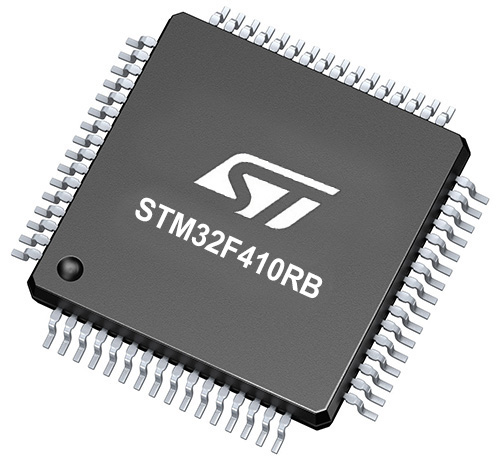
Architecture
ARM Cortex-M4
MCU Memory (KB)
128
Silicon Vendor
STMicroelectronics
Pin count
64
RAM (Bytes)
32768
You complete me!
Accessories
Click Shield for Nucleo-64 comes equipped with two proprietary mikroBUS™ sockets, allowing all the Click board™ devices to be interfaced with the STM32 Nucleo-64 board with no effort. This way, Mikroe allows its users to add any functionality from our ever-growing range of Click boards™, such as WiFi, GSM, GPS, Bluetooth, ZigBee, environmental sensors, LEDs, speech recognition, motor control, movement sensors, and many more. More than 1537 Click boards™, which can be stacked and integrated, are at your disposal. The STM32 Nucleo-64 boards are based on the microcontrollers in 64-pin packages, a 32-bit MCU with an ARM Cortex M4 processor operating at 84MHz, 512Kb Flash, and 96KB SRAM, divided into two regions where the top section represents the ST-Link/V2 debugger and programmer while the bottom section of the board is an actual development board. These boards are controlled and powered conveniently through a USB connection to program and efficiently debug the Nucleo-64 board out of the box, with an additional USB cable connected to the USB mini port on the board. Most of the STM32 microcontroller pins are brought to the IO pins on the left and right edge of the board, which are then connected to two existing mikroBUS™ sockets. This Click Shield also has several switches that perform functions such as selecting the logic levels of analog signals on mikroBUS™ sockets and selecting logic voltage levels of the mikroBUS™ sockets themselves. Besides, the user is offered the possibility of using any Click board™ with the help of existing bidirectional level-shifting voltage translators, regardless of whether the Click board™ operates at a 3.3V or 5V logic voltage level. Once you connect the STM32 Nucleo-64 board with our Click Shield for Nucleo-64, you can access hundreds of Click boards™, working with 3.3V or 5V logic voltage levels.
Used MCU Pins
mikroBUS™ mapper
Take a closer look
Click board™ Schematic

Step by step
Project assembly
Software Support
Library Description
This library contains API for 6DOF IMU 12 Click driver.
Key functions:
c6dofimu12_check_id- Function check status initialization of the device of BMI270 6-axis, smart, low-power Inertial Measurement on 6DOF IMU 12 Clickc6dofimu12_check_init_status- Function check status initialization of the device of BMI270 6-axis, smart, low-power Inertial Measurement on 6DOF IMU 12 Clickc6dofimu12_get_data- Function reads Accel and Gyro 16-bit ( signed ) X-axis, Y-axis data and Z-axis data from the 12 targeted starts from C6DOFIMU12_REG_ACC_X_LSB_ADDR register address of BMI270 6-axis, smart, low-power Inertial Measurement on 6DOF IMU 12 Click
Open Source
Code example
The complete application code and a ready-to-use project are available through the NECTO Studio Package Manager for direct installation in the NECTO Studio. The application code can also be found on the MIKROE GitHub account.
/*!
* \file
* \brief C6DofImu12 Click example
*
* # Description
* This example demonstrates the use of 6DOF IMU 12 Click board.
*
* The demo application is composed of two sections :
*
* ## Application Init
* Initializes the driver and checks the communication then initializes the device
* and sets the device default configuration.
*
* ## Application Task
* Measures acceleration and gyroscope data and displays the results on USB UART each second.
*
* \author MikroE Team
*
*/
// ------------------------------------------------------------------- INCLUDES
#include "board.h"
#include "log.h"
#include "c6dofimu12.h"
#include "c6dofimu12_config.h"
// ------------------------------------------------------------------ VARIABLES
static c6dofimu12_t c6dofimu12;
static c6dofimu12_accel_t c6dofimu12_accel;
static c6dofimu12_gyro_t c6dofimu12_gyro;
static log_t logger;
// ------------------------------------------------------ APPLICATION FUNCTIONS
void application_init ( void )
{
uint8_t tx_buf;
log_cfg_t log_cfg;
c6dofimu12_cfg_t cfg;
/**
* Logger initialization.
* Default baud rate: 115200
* Default log level: LOG_LEVEL_DEBUG
* @note If USB_UART_RX and USB_UART_TX
* are defined as HAL_PIN_NC, you will
* need to define them manually for log to work.
* See @b LOG_MAP_USB_UART macro definition for detailed explanation.
*/
LOG_MAP_USB_UART( log_cfg );
log_init( &logger, &log_cfg );
log_info( &logger, "---- Application Init ----" );
// Click initialization.
c6dofimu12_cfg_setup( &cfg );
C6DOFIMU12_MAP_MIKROBUS( cfg, MIKROBUS_1 );
c6dofimu12_init( &c6dofimu12, &cfg );
Delay_ms ( 100 );
log_printf( &logger, " Driver init done \r\n" );
log_printf( &logger, "----------------------------------\r\n");
if ( c6dofimu12_check_id( &c6dofimu12 ) == C6DOFIMU12_SUCCESS )
{
log_printf( &logger, " Communication OK\r\n" );
log_printf( &logger, "----------------------------------\r\n");
}
else
{
log_printf( &logger, " Communication ERROR\r\n" );
log_printf( &logger, " Reset the device\r\n" );
log_printf( &logger, "----------------------------------\r\n");
for ( ; ; );
}
tx_buf = C6DOFIMU12_PWR_CONF_ADV_PWR_SAVE_DISABLED |
C6DOFIMU12_FIFO_READ_DISABLED |
C6DOFIMU12_FAST_PWR_UP_DISABLED;
c6dofimu12_generic_write( &c6dofimu12, C6DOFIMU12_REG_PWR_CONF_ADDR, &tx_buf, 1 );
Delay_ms ( 100 );
tx_buf = C6DOFIMU12_CMD_INITIALIZATION_START;
c6dofimu12_generic_write( &c6dofimu12, C6DOFIMU12_REG_INIT_CTRL_ADDR, &tx_buf, 1 );
Delay_ms ( 100 );
c6dofimu12_generic_write( &c6dofimu12, C6DOFIMU12_REG_INIT_DATA_ADDR, bmi270_config_file, 8192 );
Delay_ms ( 100 );
tx_buf = C6DOFIMU12_CMD_INITIALIZATION_STOP;
c6dofimu12_generic_write( &c6dofimu12, C6DOFIMU12_REG_INIT_CTRL_ADDR, &tx_buf, 1 );
Delay_ms ( 100 );
if ( c6dofimu12_check_init_status( &c6dofimu12 ) == C6DOFIMU12_SUCCESS )
{
log_printf( &logger, " Initialization completed\r\n" );
log_printf( &logger, "----------------------------------\r\n");
}
else
{
log_printf( &logger, " Initialization ERROR\r\n" );
log_printf( &logger, " Reset the device\r\n" );
log_printf( &logger, "----------------------------------\r\n");
for( ; ; );
}
c6dofimu12_default_cfg( &c6dofimu12 );
Delay_ms ( 100 );
}
void application_task ( void )
{
c6dofimu12_get_data( &c6dofimu12, &c6dofimu12_accel, &c6dofimu12_gyro );
log_printf( &logger, " Accel X: %d | Gyro X: %d\r\n", c6dofimu12_accel.x, c6dofimu12_gyro.x );
log_printf( &logger, " Accel Y: %d | Gyro Y: %d\r\n", c6dofimu12_accel.y, c6dofimu12_gyro.y );
log_printf( &logger, " Accel Z: %d | Gyro Z: %d\r\n", c6dofimu12_accel.z, c6dofimu12_gyro.z );
log_printf( &logger, "----------------------------------\r\n");
Delay_ms ( 1000 );
}
int main ( void )
{
/* Do not remove this line or clock might not be set correctly. */
#ifdef PREINIT_SUPPORTED
preinit();
#endif
application_init( );
for ( ; ; )
{
application_task( );
}
return 0;
}
// ------------------------------------------------------------------------ END
Additional Support
Resources
Category:Motion
